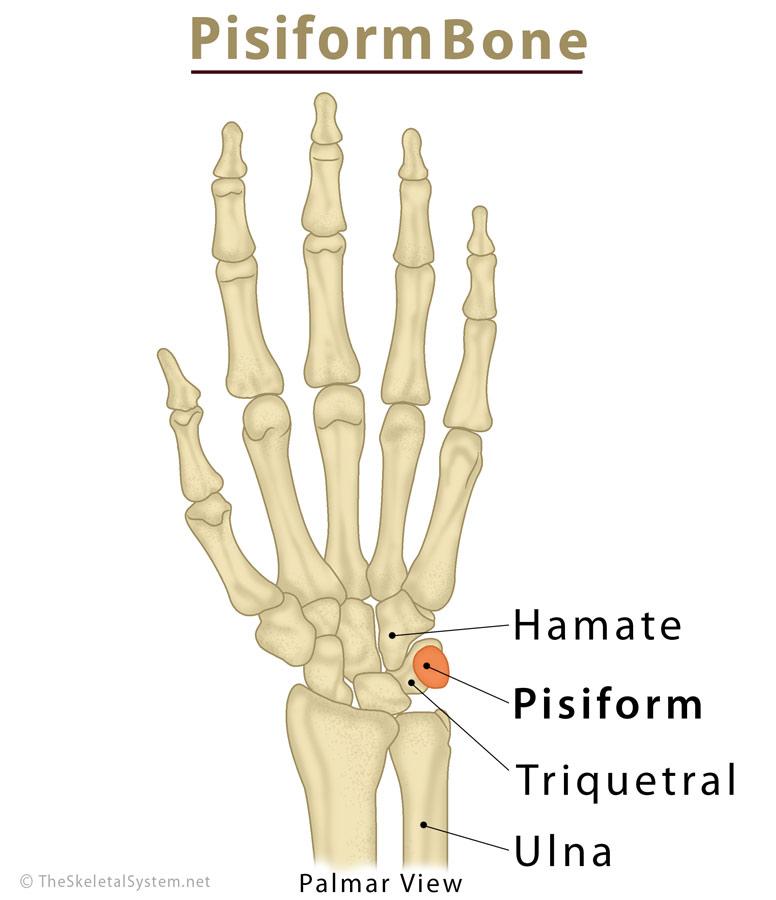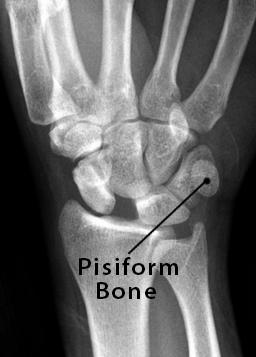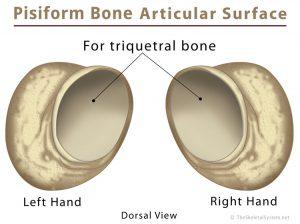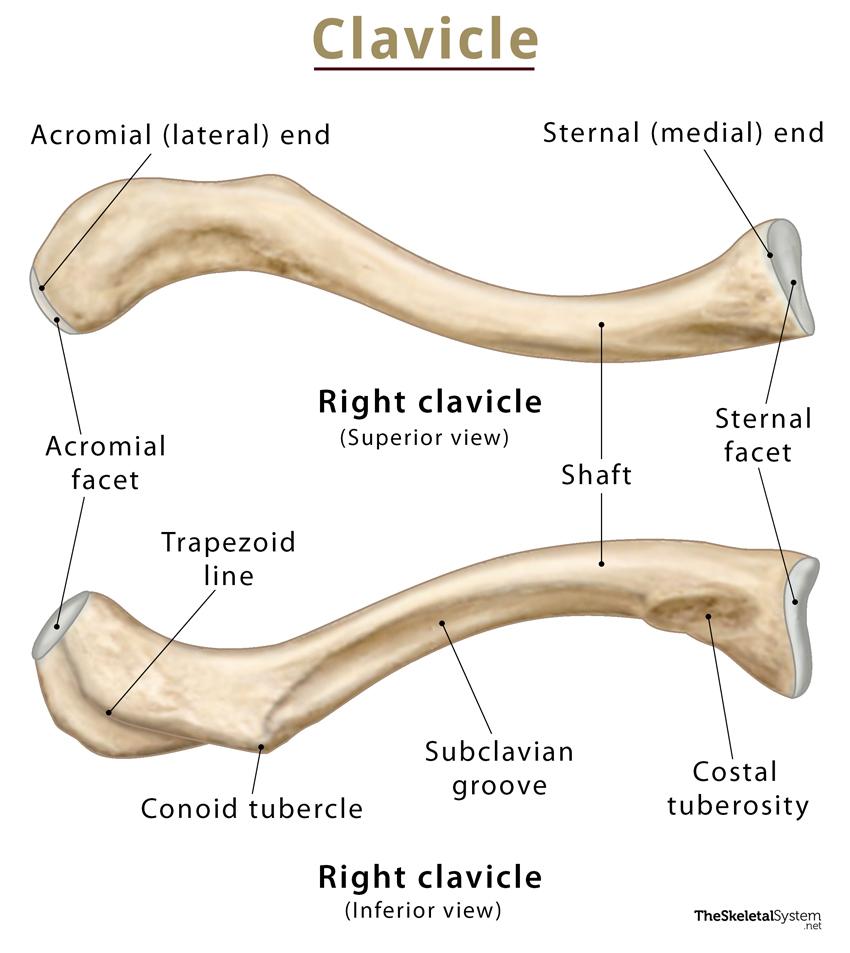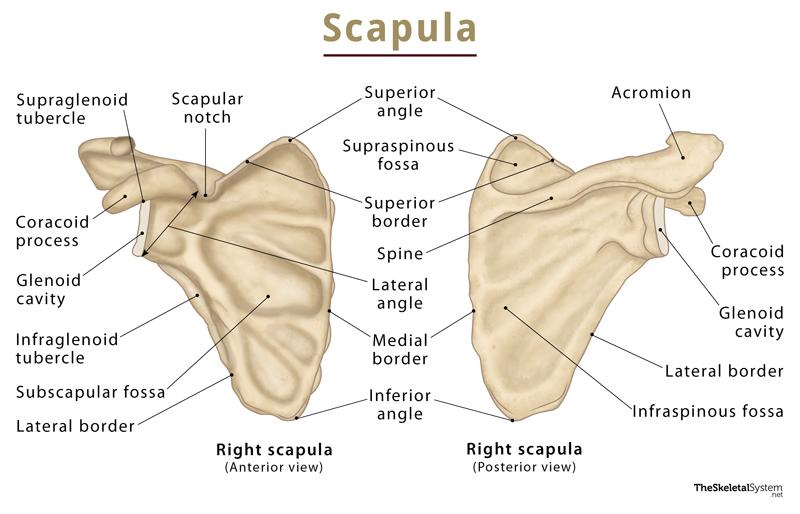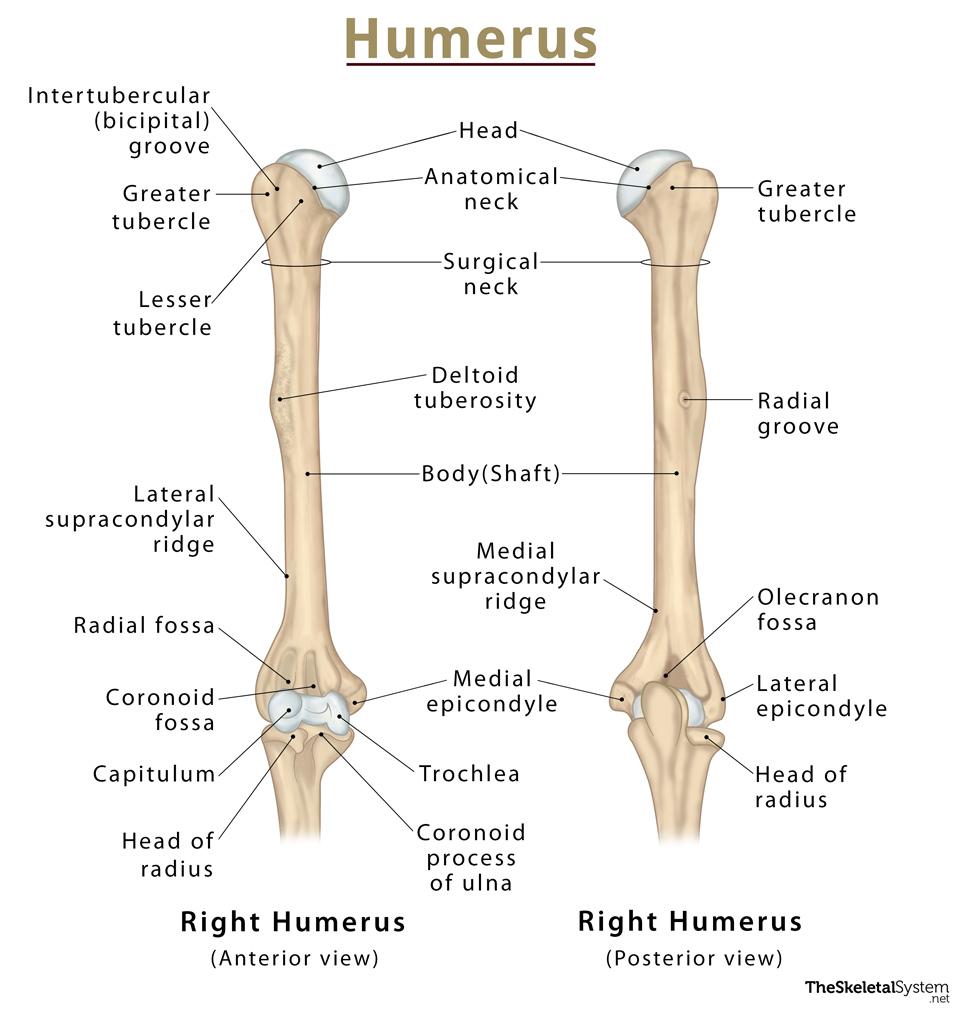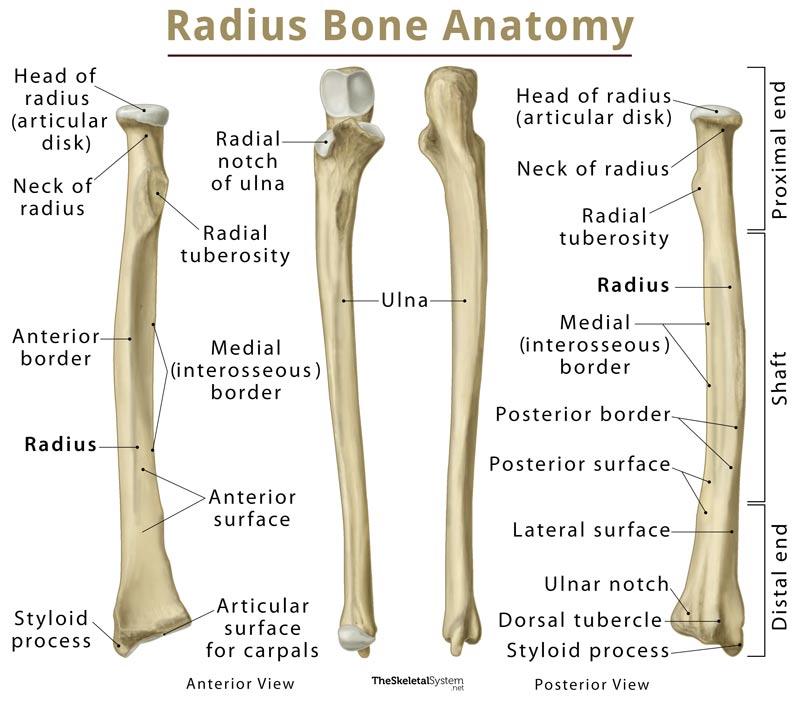Pisiform Bone
What is the Pisiform Bone
The pisiform (Latin: os pisiforme) is a pea-shaped knobbly bone in the human wrist and the smallest of the eight carpal bones [1]. The name is actually derived from ‘pisum’, the Latin word for ‘pea’, referring to the characteristic shape of the bone [2].
Where is it Located
It is one of the bones in the proximal carpal row [3], located on the palmar side of the triquetral bone [4], above the ulna (lower arm bone) [5]. Situated on the outer side of the proximal row, it is bordered by the hamate bone on its inner side. The pisiform can be felt on the palmar side of the wrist, below the little finger.
Development and Ossification
The pisiform bone develops within the flexor carpi ulnaris (FCU) tendon, which makes it a sesamoid bone [1]. It is the last wrist bone to ossify, becoming visible on an x-ray only when a child is about 8 to 12 years old [6], often later in boys than girls [3].
Pisiform Anatomy and Structure
Surfaces and Articulations
The flat dorsal surface of pisiform articulates with the palmar side of the triquetral bone [7].
The Palmar surface of pisiform is round and rough, attaching with the strong spindle-shaped hand muscle abductor digiti minimi [3, 5].
The pea-shaped bone also forms an attachment with the carpal ligament on its lateral, medial, and palmar surfaces [5].
Blood Supply
Its arterial blood supply comes from the ulnar artery [8].
Functions: What Does the Pisiform Bone Do
Along with the other seven carpal bones, the pisiform helps maintain the structure of the human wrist, its mobility, and its functioning.
This small bone also protects the FCU tendon by allowing it to connect with the triquetral bone, supporting the tendon’s movements during flexing of the wrist [5].
Associated Conditions and Common Injuries
Tendinopathy of the flexor carpi ulnaris can cause acute or chronic pain in and around the pisiform due to its close attachment to the tendon. Other common issues and injuries include osteoarthritis, bony fractures, and pain/inflammation from overuse of the wrist. Soft tissue thickening and fluid collection around the bone may also occur [5].
References
- https://www.sciencedirect.com/topics/veterinary-science-and-veterinary-medicine/pisiform-bone
- https://www.dartmouth.edu/~humananatomy/resources/etymology/Forearm_hand.htm
- https://radiopaedia.org/articles/pisiform
- http://aclandanatomy.com/multimediaplayer.aspx?multimediaid=10528069
- https://www.healthline.com/human-body-maps/pisiform-bone
- http://sketchymedicine.com/2016/01/carpal-bone-ossification/
- http://anatomyzone.com/anatomy-feed/pisiform-bone/
- https://www.karger.com/Article/Pdf/147877

